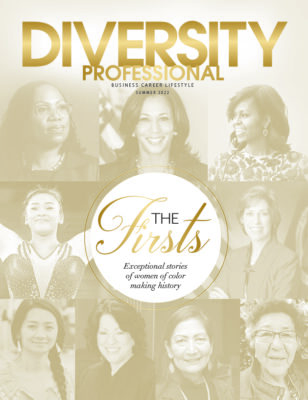The Key To Achieving True Representation In Adland
While many advertising companies have invested in initiatives to promote diversity within top creative posts in their own agencies, which are responsible for developing ad campaigns and concepts, their structures and processes to accommodate inclusion and utilization of diverse and underrepresented businesses are dismal and remains static or lacking.
Modish in their pursuit of getting their companies beyond the gatekeepers, minority businesses continue to invest their time and resources into capabilities, presentations and other avenues. They are driven to prove themselves as stable, innovative companies that are unique in the ad industry, with the hopes of getting the lifetime opportunity to create a compelling story that will, in turn, catch the eye of creative decisionmakers. Minority business owners often provide swag and delicacies, which are freely taken and consumed by industry stakeholders, but rarely are they reciprocated with a follow-up invitation to explore the potential of their respective capabilities and what they can do for agencies and their clients.
Let’s be forthright. Minorities, women and underrepresented groups don’t want to just sit back and consume traditional advertising, media or experiences. They want to participate, be connected and be creatively involved with these experiences. They don’t want to conform to the dominant mainstream culture. They want identity. They want relevance. Why? Because when multiplicity or multiculturalism is included, consumers can see relevance in the marketing campaigns created. Can we honestly expect true representation to be reflected if inclusion is not in the agency’s makeup?
That said, advertisers and marketers have the power to lead the conversation that can ignite change in the current disposition with diverse inclusion and utilization in today’s “adland.” Pain. Consequences. Rewards. Definitive stipulations of these facets must be clearly communicated to agencies going forward if the marketplace and brands want to truly mirror their target audience. These elements must be bench marked, felt and evaluated so that agencies can be held accountable for increasing their efforts in achieving a more inclusive vendor base to produce advertising, production and content as defined in their clients’ scope of work.
This can be accomplished by developing future-focused strategies through collaborative allocation of work designated by agencies, advertisers and marketers that are specifically targeted to get diverse vendors in the “inner circle.” The output of these concerted efforts should be purposed to create more commercials and advertising opportunities captained by their respective multicultural marketplace.
What’s more, we must have confidence that putting into practice proactive and purpose driven measures will open appropriate gates to fair and equitable opportunities for our world of budding entrepreneurs, minorities, women and underrepresented groups. Simply stated, we must increase awareness and the realization that diversity and heterogeneity of customers will increase over time, and the inclusion of diverse vendors will enhance the ability to serve these different audience members.
And yes, there will be gargantuan dynamics in weighing the benefits and economics involved in taking the high road to effect change to end this problematic aspect of our industry. Unwavering, bold and unprecedented decisions will be required to bring to the table a vast array of diverse vendors, talents, skills and ideas.
Nonetheless, we should be restless in our pursuit to incorporate underrepresented vendors and collectively drive past the barriers of adland and agency gatekeepers to do so. We must see achieving an advanced diverse vendor base as the opportunity and inclusion of these vendors as the execution.









